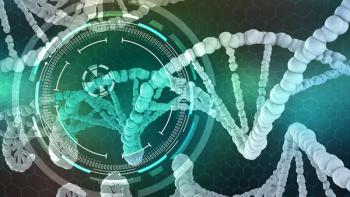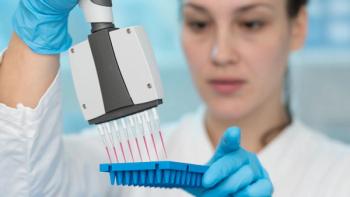
- BioPharm International-11-01-2004
- Volume 17
- Issue 11
A Risk-Based Approach to Immunogenicity Concerns of Therapeutic Protein Products, Part 1: Considering Consequences of the Immune Response to a Protein
Neutralization of therapeutic protein products does not produce an obvious clinical deficiency syndrome for all therapeutic protein products with endogenous counterparts, because many endogenous proteins are biologically redundant.
All protein therapeutics are potentially immunogenic. Indeed, severe immune responses, including immediate hypersensitivity responses and neutralizing antibody responses resulting in clinical sequelae, have brought the issue to light. Immediate hypersensitivity responses can manifest as life-threatening anaphylactic reactions, and neutralizing antibody responses can not only neutralize the therapeutic protein, but also its endogenous counterpart, leaving patients with a clinical deficiency syndrome. Yet, for many therapeutic protein products the antibody response has little apparent effect. So how does FDA, with the myriad products it regulates, approach immunogenicity concerns for novel products in development and for major changes in manufacture and clinical use of licensed products? This brief review will focus on the scientific basis of the Agency's risk assessment strategy for immunogenicity. There will be two other parts to the discussion. Next month we will cover two more elements, and the final month will cover effects of manufacturing changes on immunogenicity.
RISK ASSESSMENT STRATEGY
First Element: Consider the severity of consequences of the immune response to a protein therapeutic.
Critical Factors: The origin of the product and the presence and biological function of endogenous protein counterparts.
When considering immune responses engendered by therapeutic proteins, the paramount concerns are safety and efficacy. The latter consideration is particularly prominent when immune responses abrogate efficacy of lifesaving therapies. FDA views these safety and efficacy concerns hierarchically.
Product Origin: Xenobiotic products
Consequences: Hypersensitivity responses and neutralizing antibody development
The most serious types of immune responses are immediate hypersensitivity reactions, especially when severe. Such responses, though relatively rare, are most frequently associated with xenobiotic products including microbial products (for example, streptokinase,1 asparaginase,2 urate oxidase,3 and toxin conjugates) and animal proteins (murine or chimeric MAbs4 and aprotinin5), but they also occur with some human origin products. The incidence typically rises on re-exposure, but the time lapse between exposures may critically alter incidence. For example, there is a 5% incidence of anaphylaxis upon re-exposure to aprotinin within six months but a much lower incidence following a greater time interval.5
The development of neutralizing antibody is expected with administration of foreign proteins, limiting product efficacy. However, the rapidity of development or strength of the immune response may be modified to some degree via alteration of key product attributes such as product aggregates, adjuvants, and glycosylation state. Pegylation also has been employed to thwart immune responses.2,6
FDA Recommendation. Because immediate hypersensitivity responses cannot be predicted from product characteristics, patient-associated factors, or animal studies, treatment with such products may require skin prick testing prior to initial administration2 and treatment should be administered in a setting where life-threatening events can be remediated. Moreover, in recurrent administration, where the risk of hypersensitivity responses increases, testing for IgE generation by radioallergosorbent test (RAST) assay and skin prick tests before continued dosing may be warranted to reduce the incidence of catastrophic responses.
Product Origin: Human sequence; mammalian cell substrate
Consequences: Antibodies that neutralize both therapeutic and endogenous proteins; hypersensitivity responses
Hypersensitivity responses are infrequent with human-origin protein products, particularly in patients with a fully functional endogenous protein counterpart to the therapeutic, but they occur to a variable extent when the endogenous protein counterpart is mutated and nonfunctional or absent due to deletion mutations.
Generation of neutralizing antibody to a therapeutic protein product is deleterious if it blocks the therapeutic efficacy of the product, but it can be devastating when it cross-reacts on an endogenous protein counterpart of the therapeutic. Why is it possible to break tolerance to a normal endogenous protein and neutralize its activity? The answer is that immunological tolerance to endogenous soluble proteins is not complete for proteins present at low levels: T and B cells specific for low-abundance autoantigens are not completely eliminated from the body and, given sufficient provocation, can generate immune responses.7 This is the basis for autoimmune responses and, potentially, for fail-safe mechanisms for potent cytokines and growth factors.8,9
Neutralizing antibody responses to therapeutic proteins are particularly dangerous when the endogenous protein counterpart of the therapeutic sub-serves a biologically unique function. For example, neutralizing antibodies to PEG-MGDF, whose endogenous counterpart, thrombopoietin (TPO), uniquely regulates platelet production, caused severe thrombocytopenia in healthy volunteers.10 A second example is the recent upsurge in pure red cell aplasia (PRCA) in chronic renal failure patients. Following formulation, packaging, and administration route changes to Eprex, a recombinant erythropoietin alpha product, there was a sharp increase in PRCA because the product induced neutralizing antibody that also neutralized endogenous erythropoietin (which uniquely regulates red blood cell mass), leaving patients intensively transfusion dependent.11-13
Neutralization of therapeutic protein products does not produce an obvious clinical deficiency syndrome for all therapeutic protein products with endogenous counterparts, because many endogenous proteins are biologically redundant. Therefore, although neutralizing antibody to IFN-β may diminish its effectiveness in multiple sclerosis, there is no obvious immune deficiency engendered.14 This is likely due to redundancy in the biological activity of type 1, α and β interferons; there are at least 22 species of IFN-α.15 However, subtler effects of neutralization may not be readily apparent until the system is stressed and carefully observed. For example, in tissue plasminogen activator (tPA) or urokinase plasminogen activator (uPA) deficient mice, nerve regrowth is stunted following crush injury, betraying a role for such factors in nerve regrowth and suggesting that neutralization of one or both of these factors might delay nerve regrowth.16
FDA Recommendation. For products whose endogenous counterparts mediate biologically important functions (highest risk), immunogenicity testing with sensitive, qualified binding and neutralizing assays should be conducted at the earliest stages of product development and performed in real time during clinical trials. Clinical observation for development of hypersensitivity responses, which may presage development of neutralizing antibody, and signs of clinical factor deficiency, is clearly critical. Guidance on appropriate assay development is available from ICH proceedings,18 recent publications,19 and meetings with the agency.
Product Origin: Human sequence protein therapeutic; endogenous counterpart is absent, present at physiologically insignificant levels, or mutated
Consequences: Neutralizing antibody inhibits efficacy of therapeutic; hypersensitivity responses
Immediate hypersensitivity responses occur with variable frequency in settings where a therapeutic protein is administered to patients in whom the endogenous factor counterpart is absent, mutated, or present at physiologically insignificant levels. This is especially problematic in patients with total deficiency of the factor as compared to those with mutated or inactive forms of the protein. For example, in Factor IX deficiency, patients with complete gene deletions were found to have a ≥26% risk of anaphylactic responses on recurrent product administration, whereas risk was ~2.4% for other mutations.20 Other therapeutic enzymes administered to patients with enzyme deficiency disorders commonly induce infusion reactions, which may be immunologically mediated but which are generally treatable with prophylactic medication and infusion rate control.4,21 True anaphylactic reactions are rare.
Generation of neutralizing antibody to a therapeutic protein product can be devastating for a lifesaving therapeutic. For example, neutralization of Factor VIII or therapeutic enzymes for "inborn errors of metabolism" abrogates a known or potential lifesaving therapy. Neutralizing antibody has been associated with developmental regression in the treatment of Pompe's disease with recombinant alpha-glucosidase22 and with great morbidity in patients with hemophilia A.23,24 To ameliorate Factor VIII inhibitors, a specific tolerizing regimen was developed that enables successful treatment in most cases.23,24 However, immune tolerance induction for factor VIII inhibitors is an expensive undertaking, usually requiring several months to achieve significant reductions in the inhibitor antibody titer.
It should be noted that neutralizing antibody may enhance rather than neutralize the product's biological activity by serving as a carrier that prolongs the product's circulating half life.25 In other circumstances, neutralizing antibody is not sufficient to abrogate the product's efficacy but rather dramatically alters the pharmacokinetic profile, requiring more frequent dosing.26
FDA Recommendation. For life-threatening diseases, immunogenicity testing should be conducted from the earliest stages of product development per above recommendation. Furthermore, consideration should be given to tolerance-inducing protocols for patients with enzyme deficiency disorders, who completely lack enzyme, i.e., are cross-reactive immunologic material (CRIM) negative.
ARE BINDING ANTIBODIES SIGNIFICANT?
Although neutralizing antibodies produce more devastating effects than binding antibodies that are not neutralizing, binding antibodies are significant in many ways. First, binding antibody may mediate significant clinical effects such as infusion reactions
4,21
and may alter the product's pharmacokinetic or pharmacodynamic profiles.
26
Second, binding antibody may not only be a precursor to neutralizing antibodies, but may actually engender neutralizing antibodies via epitope spreading.
27
Thus, in the antibody response to rhuIL-2
28
and rhuIFN-β,
29
neutralizing antibodies arise months after the development of binding antibody, begging the question of whether binding antibody is required for the development of neutralizing antibody. Third, in clinical trials, the presence of binding antibodies identifies the population at risk for presence of neutralizing antibody, because the binding antibody assay is more sensitive than that for neutralizing antibody and is therefore used to avoid needless, expensive, and labor-intensive testing for neutralization. And finally, binding antibody is a measure of product quality. It indicates that the product not only bears antigenic determinants to which an immune response can be directed (antigenicity), but that it also presents such determinants in a context that elicits an immune response, for example, via adjuvant activity in the product and product aggregates.
REFERENCES
1. McGrath K, Patterson R. Immunology of streptokinase in human subjects.
Clin. Exp. Immunol.
1985; 62:421-26.
2. Graham ML. Pegaspargase: a review of clinical studies. Advanced Drug Delivery Reviews 2003; 55:1293-1302.
3. Physicians Desk Reference. 2004. Elitek. 3023-3024.
4. Pendley C, Schantz A, Wagner C. Immunogenicity of therapeutic monoclonal antibodies. Current Opinion in Molecular Therapeutics 2003; 5:172-79.
5. Dietrich W, Spath P, Zuhlsdorf M, Dalichau H, Kirchoff PG, Kuppe H, et al. Anaphylactic reactions to aprotinin reexposure in cardiac surgery relation to antiaprotinin immunoglobulin G and E antibodies. Anesthesiology 2001; 95:64-71.
6. Harris J, Martin N, Modi M. Pegylation: a novel process for modifying pharmacokinetics. Clin. Pharmacokinet. 2001; 40:539-51.
7. Chackerian B, Lenz P, Lowy D, Schiller JT. Determinants of autoantibody induction by conjugated papillomavirus like particles. J. Immunol. 2002; 169:6120-26.
8. Wildbaum G, Nahir M, Karin N. Beneficial autoimmunity to proinflammatory mediators restrains the consequences of self-destructive immunity. Immunity 2003; 19:679-88.
9. Bendtzen K, Svenson, M, Jonsson, V, Hippe E. Antibodies to cytokines — friends or foes? Immunol. Today 1990; 11(5):167-9.
10. Li J, Yang C, Yuping X, Bertino A, Glaspy J, Roberts M, et al. Thrombocytopenia caused by the development of antibodies to thrombopoietin. Blood 2001; 98:3241-3248.
11. Casadevall N, Nataf J, Viron B, Kolta A, Kiladjian JJ, Martin-Dupont P, et al. Pure red cell aplasia and anti-erythropoietin antibodies in patients treated with recombinant erythropoietin. N. Eng. J. Med. 2002; 346(7):469-75.
12. Gershon SK, Luksenburg H, Cote TR, Braun MM. Pure red cell aplasia and recombinant erythropoietin (Correspondence). New Eng. J. Med. 2002; 346(20):1584-5.
13. Bennett C, et al. Pure red-cell aplasia and epoetin therapy. New Eng. J. Med. 2004; 351(14):1403-1408.
14. Perini P, Calabrese, M, Biasi G, Gallo P. The clinical impact of interferon beta antibodies in relapsing remitting MS. J. Neurol. 2004; 251:305-309.
15. Zoon KC, Miller D, Bekisz J, zur Nedden D, Enterline J, Nguyen N, et al. Purification and characterization of multiple components of human lymphoblastoid interferon-α. J. Biol. Chem. 1992; 267:15210-
16. Siconolfi L, Seeds N. Mice lacking tPA, uPA or plasminogen genes show delayed functional recovery after sciatic nerve crush. J. Neurosci. 2001; 21:4348-55.
17. Weber G, Gross J, Kromminga A, Loew H-H, Eckardt K-U. Allergic skin and systemic reactions in a patient with pure red cell aplasia and anti-erythropoietin antibodies challenged with different epoietins. J. Am. Soc. Nephrol. 2002; 13:2381-2383.
18. ICH. Validation of analytical procedures. Q2A and Q2B. Geneva 1995.
19. Mire-Sluis A, Barrett YC, Devanarayan V, Koren E, Liu H, Maia M, et al. Recommendations for the design and optimization of immunoassays used in the detection of host antibodies against biotechnology products. Journal of Immunological Methods 2004; 289:1-16.
20. Thorland EC, Drost J, Lusher J, Warrier I, Shapiro A, Koerper MA, et al. Anaphylactic response to Factor IX replacement therapy in hemophilia B patients: complete gene deletions confer the highest risk. Hemophilia 1999; 5:101-105.
21. Wilcox WR, Banikazemi M, Guffon N, Waldek S, Lee P, Linthorst GE, et al. Long-term safety and efficacy of enzyme replacement therapy for Fabry disease. Am J. Hum. Genet. 2004; 75(1):65-74.
22. Amalfitano A, Bengur AR, Morse RP, Majure JM, Case LE, Veerling DL, et al. Recombinant human acid a-glucosidase enzyme therapy for infantile glycogen storage disease type II: results of a phase I/II clinical trial. Genetics in Medicine 2001; 3(2):132-38.
23. Wight J, Paisley S, Knight C. Immune tolerance induction in patients with hemophilia A with inhibitors: a systematic review. Hemophilia 2003; 9:436-63.
24. Mariani G, Siragusa S, Kroner B. Immune tolerance induction in hemophilia A: a review. Seminars in Thrombosis and Hemostasis 2003; 29:69.
25. Finkelman FD, Madden K, Morris S, Holmes J, Boiani N, Katona I, et al. Anti-cytokine antibodies as carrier proteins. Prolongation of in vivo effects of exogenous cytokines by injection of cytokine anti-cytokine antibody complexes. J. Immunol. 1993; 151:1235-44.
26. Baert F, Noman M, Vermeire S, Van Assche G, D' Haens G, Carbonez A, et al. Influence of immunogenicity on the long-term efficacy of infliximab in Crohn's disease. New Eng. J. Med. 2003; 348(7):601-8.
27. McCluskey J, Farris A, Keech C, Purcell A, Rischmueller M, Kinoshita G, et al. Determinant spreading: lessons from animal models and human disease. Imm. Rev. 1998; 164:209-229.
28. Prummer O. Treatment-induced antibodies to interleukin 2. Biotherapy 1997; 10(1):15-24.
29. LaRocca AP, Leung SC, Marcus SG, Colby CB, Borden EC. Evaluation of neutralizing antibodies in patients treated with recombinant interferon-β ser. Journal of Interferon Research 1989 Sep; 9 supplement 1:S51-60.
ACKNOWLEDGMENTS
The authors thank Drs. Karen Weiss, Keith Webber, Kathleen Clouse, Jay Lozier, and Andrew Chang for critical reading of the manuscript.
Articles in this issue
about 21 years ago
Editorial—Educating The Masses About Biopharmaabout 21 years ago
Let There Be Light: Plant-Made Pharmaceuticals' New Home is Undergroundabout 21 years ago
Monoclonal Antibodies for Cancerabout 21 years ago
Biotechnology in Germanyabout 21 years ago
StreetTalk: Hedging Your Betsabout 21 years ago
Regulatory Beat: Biotech Firms Face New GMP PoliciesNewsletter
Stay at the forefront of biopharmaceutical innovation—subscribe to BioPharm International for expert insights on drug development, manufacturing, compliance, and more.





